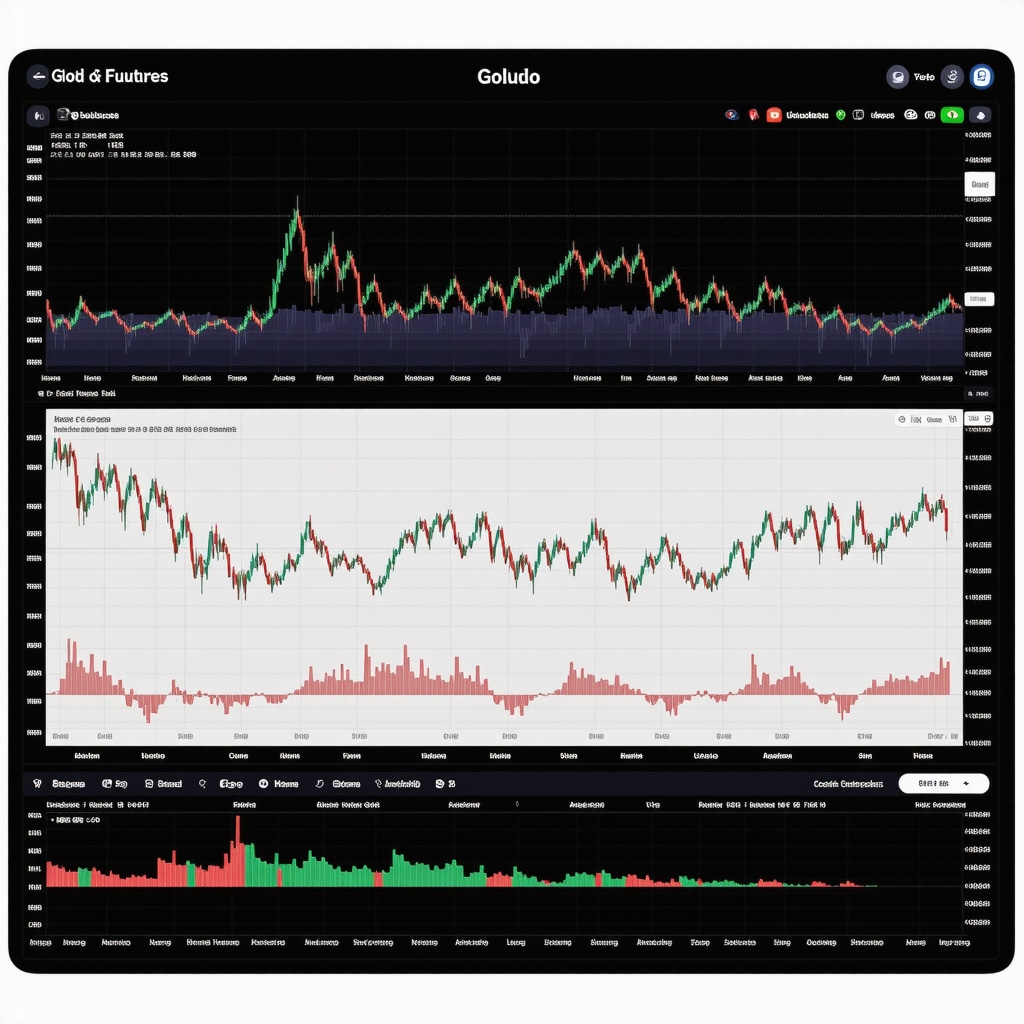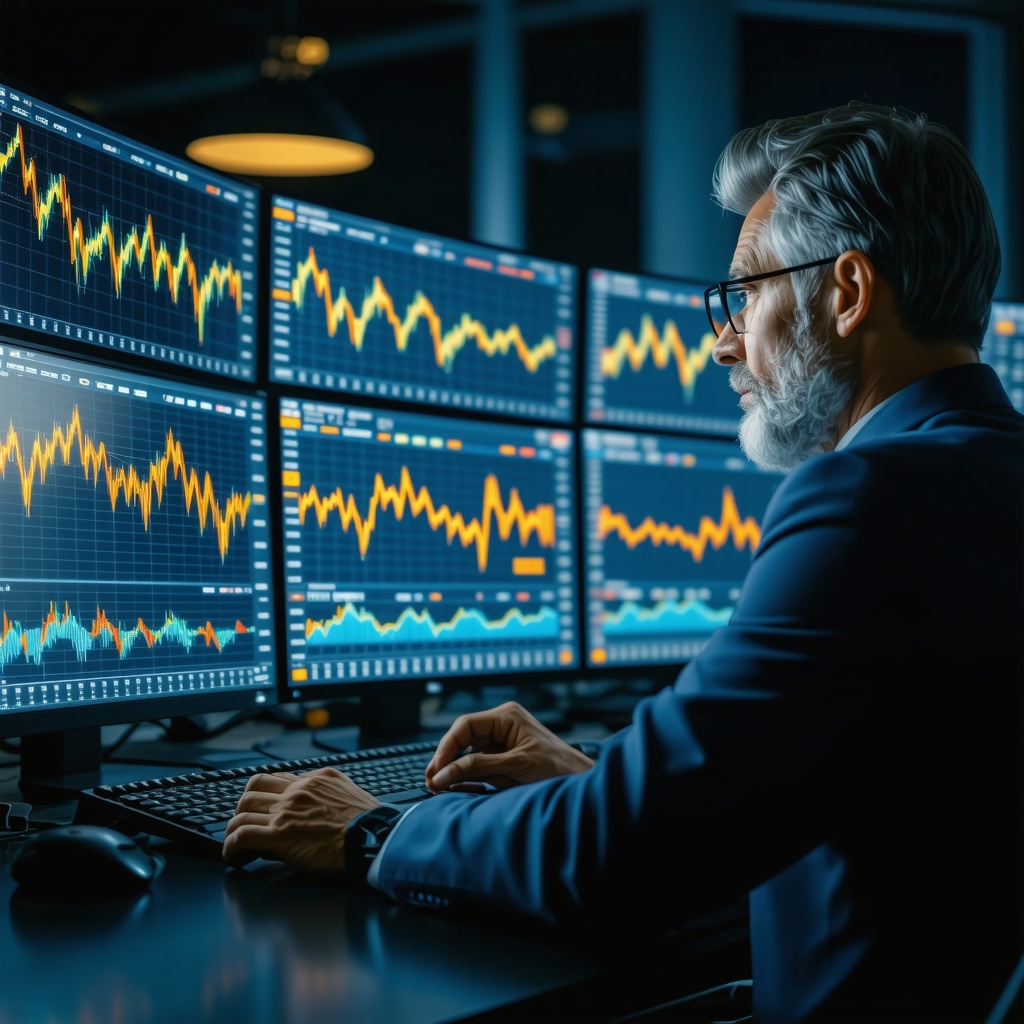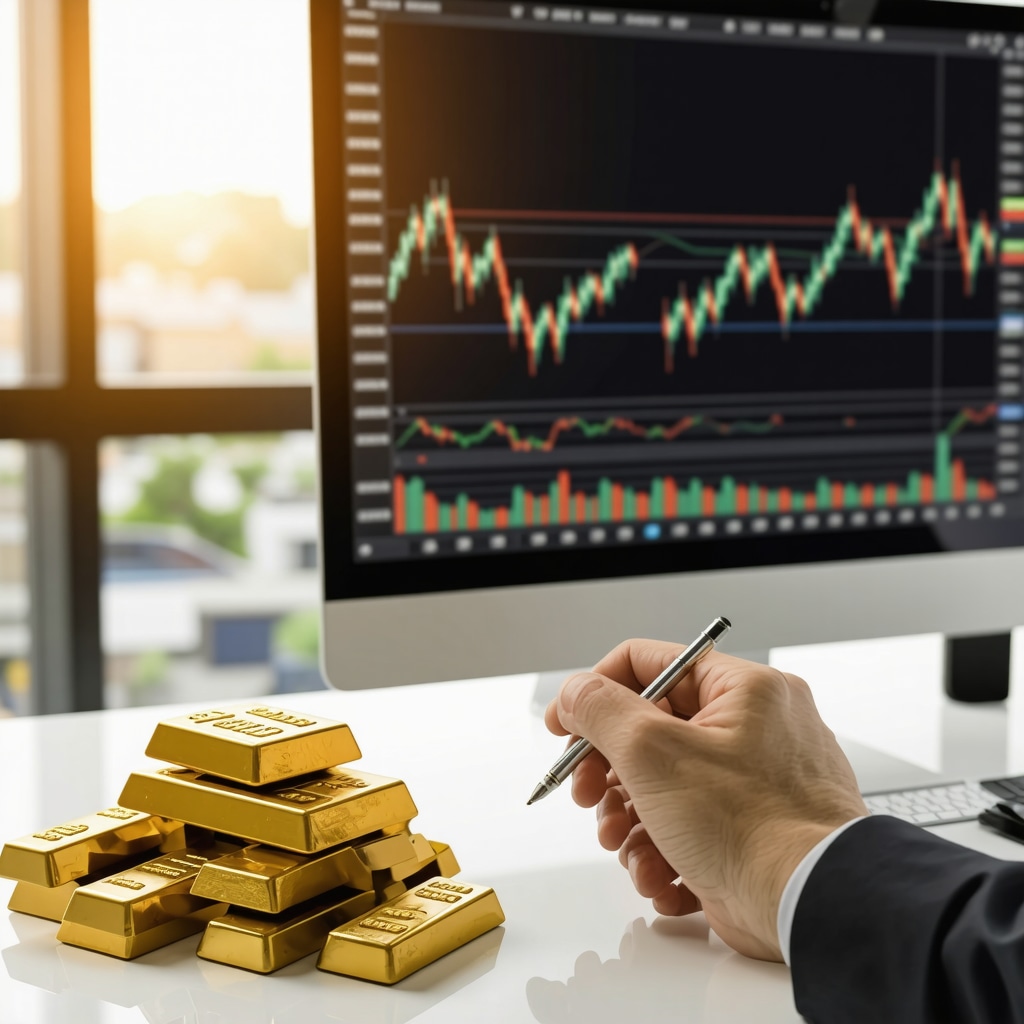Unlocking the Gold Futures Market: Your Gateway to Strategic Wealth
Gold futures trading stands as a compelling avenue for investors seeking exposure to the precious metals market with leverage and liquidity. Unlike physical gold purchases, futures contracts allow traders to speculate on gold price movements without immediate ownership, presenting both lucrative opportunities and nuanced risks. This guide demystifies the process, offering a clear pathway for newcomers eager to harness the power of gold futures.
Mapping Your Entry: Essential Preparations Before Trading Gold Futures
Before diving into gold futures, it’s critical to understand the market infrastructure. Futures contracts for gold trade primarily on exchanges such as the COMEX, part of the CME Group, where standardized contracts specify quantity, quality, and delivery dates. Setting up a futures trading account requires a brokerage that supports commodities trading, often necessitating margin deposits that act as collateral against potential losses.
What Are the Key Risks and Rewards in Trading Gold Futures?
Gold futures offer substantial profit potential due to leverage, but this amplifies risk exponentially. Price volatility can lead to rapid gains or devastating losses. Traders must vigilantly monitor margin requirements to avoid forced liquidations. However, futures also provide strategic advantages such as hedging against physical gold holdings or economic uncertainties, making them versatile tools for portfolio diversification.
Strategic Steps: How to Initiate Your Gold Futures Trading Journey
Step 1: Choose a Reputable Futures Broker
Selecting a broker with robust regulatory compliance, competitive commissions, and reliable trading platforms sets the foundation. Look for brokers offering educational resources and responsive support tailored to commodities trading.
Step 2: Understand Contract Specifications and Market Hours
Each gold futures contract represents 100 troy ounces of gold, with prices quoted in U.S. dollars per ounce. Market sessions span nearly 24 hours on weekdays, allowing flexible trading but demanding constant market vigilance.
Step 3: Develop a Risk-Managed Trading Plan
Incorporate stop-loss orders and position sizing strategies to protect capital. Experienced traders often combine fundamental analysis of global economic indicators with technical chart patterns to time entries and exits effectively.
Expert Insights: Leveraging Tools and Data for Gold Futures Success
Utilize advanced trading tools such as real-time price feeds, volatility indices, and economic calendars to anticipate price shifts. Staying informed on global gold demand trends and supply dynamics—like mining outputs and geopolitical tensions—provides critical context to price movements. For deeper investment strategies, explore resources like this practical guide on gold futures trading that integrates market analysis with tactical advice.
Join the Conversation: Share Your Gold Futures Trading Experiences
Are you ready to navigate the exciting world of gold futures? Share your trading strategies or questions in the comments below and connect with a community of like-minded investors.
Reflections on My Gold Futures Journey: Lessons Learned Along the Way
Trading gold futures is much more than just following charts and market news; it’s a personal journey that blends discipline, patience, and a keen eye for global economic shifts. Early in my trading days, I underestimated the emotional rollercoaster that comes with leveraged positions. I remember one volatile session where gold prices swung dramatically due to geopolitical tensions — it was a harsh lesson in the importance of setting strict stop-loss orders and sticking to my risk management plan.
Since then, I’ve learned to approach gold futures with a combination of technical rigor and emotional resilience. I rely on a mix of fundamental insights and technical indicators, but I keep reminding myself that no system guarantees success. The key is continuous learning and adapting strategies based on the ever-changing market landscape.
Integrating Gold Futures into a Balanced Portfolio
Gold futures aren’t just for speculative traders; they can also serve as an effective hedge within a diversified portfolio. For example, during times of economic uncertainty or inflationary pressures, gold’s traditional role as a safe haven shines through. I personally use gold futures alongside physical holdings and gold ETFs to balance liquidity and security.
In fact, according to a recent report by the World Gold Council, gold demand is increasingly influenced by its status as an inflation hedge and portfolio diversifier, especially amid volatile global markets (source). This reinforces my approach to blend different gold investment types to optimize returns and minimize risk.
How Do You Decide When to Trade Gold Futures Versus Buying Physical Gold?
This question often comes up in my conversations with fellow investors. The choice depends on your investment goals, risk tolerance, and time horizon. Futures offer high liquidity and the ability to leverage, which is attractive for short-term traders looking to capitalize on price swings. On the other hand, physical gold provides tangible asset security and is less affected by the daily market noise.
For those interested in safely acquiring physical gold, I recommend checking out this comprehensive physical gold buying guide. It covers everything from choosing between coins and bars to storing your gold securely.
Practical Tips: Staying Ahead with Gold Futures Trading Tools
One of the biggest advantages in today’s market is the wealth of digital tools available. I use real-time price alerts, volatility indices, and economic calendars to stay informed and make timely decisions. Many brokers provide sophisticated platforms with integrated charting and automated order types, which can be a game-changer for managing risk effectively.
If you’re looking to boost your trading efficiency, exploring the top gold trading apps can be a great step forward. These apps help you monitor the market on the go and execute trades swiftly, which is crucial in a fast-moving environment (check out some popular options here).
Remember, the key to success in gold futures trading lies not only in strategy but also in leveraging the right tools and maintaining discipline.
Engage with Fellow Investors: Share Your Thoughts and Experiences
Have you dabbled in gold futures or prefer other forms of gold investment? What strategies have worked best for you, and which pitfalls have you learned to avoid? I’d love to hear your stories and insights. Feel free to comment below or share this article with friends who might find it helpful. Also, if you’re curious about different gold investment types, explore our detailed post on choosing between coins, bars, and ETFs to find what suits your goals best.
Decoding Market Sentiment: Using Advanced Indicators to Predict Gold Futures Movements
Beyond basic technical analysis, expert gold futures traders incorporate sophisticated sentiment indicators that gauge market psychology and investor behavior. Tools such as the Commitment of Traders (COT) report provide granular insights into the positioning of large speculators versus commercial hedgers. By analyzing shifts in these positions, traders can anticipate potential reversals or trend continuations in gold prices.
Additionally, the integration of volatility indices like the CBOE Gold ETF Volatility Index (GVZ) helps identify periods of heightened uncertainty, which often precede significant price swings. Combining these with macroeconomic data—such as real interest rates, inflation expectations, and central bank policies—enables a nuanced approach to timing entries and exits in gold futures markets.
How Can Algorithmic Trading Enhance Gold Futures Performance While Managing Risk?
Algorithmic trading, employing predefined rules and machine learning models, has revolutionized gold futures trading by enabling rapid execution and enhanced risk control. Advanced algorithms incorporate multi-factor models that analyze price patterns, volume, and external economic indicators simultaneously, reducing human bias and emotional decision-making.
Risk management is embedded within these systems through dynamic position sizing, stop-loss triggers, and real-time portfolio risk assessments. However, deploying algorithmic strategies demands robust backtesting on historical gold price data and continuous optimization to adapt to evolving market conditions.
Integrating Gold Futures with Macro Hedging Strategies: A Sophisticated Portfolio Approach
Seasoned investors often use gold futures not only for speculative gains but also as a macro hedge against systemic risks like currency devaluation or geopolitical instability. By correlating gold futures positions with exposures in equities, bonds, and foreign currencies, investors can construct resilient portfolios that mitigate downside risk during turbulent economic cycles.
For example, in periods of anticipated dollar weakness, long gold futures contracts can offset losses in dollar-denominated assets. Moreover, tactical rebalancing informed by quantitative models ensures that gold exposure remains optimal relative to shifting market regimes.
Research from the Journal of Portfolio Management highlights that incorporating gold futures can improve risk-adjusted returns and reduce portfolio drawdowns when executed with disciplined timing and sizing (source).
Harnessing Real-Time Global Data Feeds: The Cutting Edge of Gold Futures Trading
In today’s hyperconnected markets, access to real-time global economic data is a game-changer for gold futures traders. Leveraging APIs that provide live updates on central bank announcements, inflation releases, and geopolitical developments allows traders to react instantly to events that influence gold prices.
Integrating these data streams with sophisticated analytics platforms enables predictive modeling and scenario analysis, empowering traders to anticipate market moves before they fully materialize. This proactive stance is crucial in a market where milliseconds can determine profit or loss.

What Are the Best Practices for Combining Fundamental and Technical Analysis in Gold Futures Trading?
Blending fundamental and technical analysis requires a strategic framework that respects the strengths and limitations of each approach. Fundamental analysis provides context about gold’s intrinsic value drivers, such as monetary policy shifts or supply-demand imbalances, while technical analysis offers timing cues through price patterns and momentum indicators.
Top traders synchronize fundamental catalysts with technical confirmation signals to enter or exit positions, thereby improving the probability of success. For instance, a bullish macroeconomic outlook paired with a breakout above a key resistance level can trigger a high-conviction trade.
Developing this integrated skill set demands continuous education and experience, underscoring the value of expert mentorship and advanced trading courses.
Ready to elevate your gold futures trading strategies? Dive deeper into algorithmic approaches and advanced risk management techniques by exploring our expert tutorials and community webinars designed for serious traders.
Algorithmic Trading: Revolutionizing Gold Futures with Precision and Speed
In the evolving landscape of gold futures, algorithmic trading represents a paradigm shift by enabling traders to execute complex strategies with unparalleled precision and speed. These automated systems harness artificial intelligence and machine learning models to parse vast datasets, identify subtle market inefficiencies, and enact trades in milliseconds—well beyond human capabilities.
Integrating algorithmic solutions demands rigorous backtesting against historical gold price data to ensure robustness across diverse market conditions. Dynamic risk controls embedded within these algorithms, such as adaptive stop-loss thresholds and real-time volatility adjustments, help mitigate downside exposure while capitalizing on fleeting opportunities.
Advanced Hedging Techniques: Synchronizing Gold Futures with Macro-Economic Portfolios
For institutional investors and sophisticated traders, gold futures serve as vital instruments within macro-hedging frameworks designed to counterbalance systemic risks. By aligning gold futures positions with assets vulnerable to currency fluctuations, inflationary shocks, or geopolitical unrest, portfolios achieve enhanced resilience.
Quantitative models that incorporate regime-switching dynamics enable nuanced tactical allocations, optimizing gold exposure during phases of market turbulence. Recent empirical studies published in the Journal of Portfolio Management confirm that disciplined incorporation of gold futures augments risk-adjusted returns and significantly dampens drawdowns.
Harnessing Real-Time Global Data Feeds: The Cutting Edge of Gold Futures Trading
In today’s hyperconnected markets, access to real-time global economic data is a game-changer for gold futures traders. Leveraging APIs that provide live updates on central bank announcements, inflation releases, and geopolitical developments allows traders to react instantly to events that influence gold prices.
Integrating these data streams with sophisticated analytics platforms enables predictive modeling and scenario analysis, empowering traders to anticipate market moves before they fully materialize. This proactive stance is crucial in a market where milliseconds can determine profit or loss.

What Are the Best Practices for Combining Fundamental and Technical Analysis in Gold Futures Trading?
Blending fundamental and technical analysis requires a strategic framework that respects the strengths and limitations of each approach. Fundamental analysis provides context about gold’s intrinsic value drivers, such as monetary policy shifts or supply-demand imbalances, while technical analysis offers timing cues through price patterns and momentum indicators.
Top traders synchronize fundamental catalysts with technical confirmation signals to enter or exit positions, thereby improving the probability of success. For instance, a bullish macroeconomic outlook paired with a breakout above a key resistance level can trigger a high-conviction trade.
Developing this integrated skill set demands continuous education and experience, underscoring the value of expert mentorship and advanced trading courses.
Ready to elevate your gold futures trading strategies? Dive deeper into algorithmic approaches and advanced risk management techniques by exploring our expert tutorials and community webinars designed for serious traders.
Frequently Asked Questions (FAQ)
What exactly are gold futures, and how do they differ from buying physical gold?
Gold futures are standardized contracts to buy or sell a specified quantity of gold at a predetermined price on a future date. Unlike physical gold ownership, futures enable traders to speculate on price movements without immediate delivery, offering leverage and liquidity but also higher risk exposure.
How does leverage in gold futures trading impact potential profits and losses?
Leverage allows traders to control a large contract value with a relatively small margin deposit, amplifying both gains and losses. While this can enhance profit potential, it also increases risk, necessitating strict risk management strategies such as stop-loss orders and position sizing.
What are the key risk management techniques for trading gold futures effectively?
Effective risk management includes setting stop-loss orders to limit downside, diversifying exposure, monitoring margin calls closely, and combining technical and fundamental analysis to make informed decisions. Additionally, using algorithmic trading with embedded risk controls can help maintain discipline.
How can I integrate gold futures into a diversified investment portfolio?
Gold futures can act as a hedge against inflation, currency devaluation, and market volatility. Incorporating them alongside equities, bonds, and physical gold enhances portfolio resilience and risk-adjusted returns, especially when tactical asset allocation aligns with macroeconomic conditions.
What role do algorithmic trading and real-time data play in gold futures markets?
Algorithmic trading leverages AI and machine learning to execute trades rapidly and unemotionally, while real-time global data feeds enable traders to anticipate market-moving events. Together, they improve precision, speed, and risk management in dynamic gold futures markets.
How do fundamental and technical analyses complement each other in gold futures trading?
Fundamental analysis evaluates macroeconomic drivers like inflation and monetary policy, providing context for price trends, while technical analysis focuses on price patterns and momentum for timing trades. Combining both approaches increases the probability of successful entries and exits.
What are the typical contract specifications for gold futures on the COMEX?
Each COMEX gold futures contract represents 100 troy ounces of gold, priced in U.S. dollars per ounce, with standardized delivery months and expiration dates. Understanding these details is crucial for accurate trade execution and margin calculation.
Can beginners successfully trade gold futures, or is it only for advanced traders?
While gold futures offer lucrative opportunities, they involve significant complexity and risk. Beginners should start with thorough education, use demo accounts, implement strict risk controls, and gradually build experience before committing substantial capital.
What macroeconomic factors most influence gold futures prices?
Key factors include real interest rates, inflation expectations, U.S. dollar strength, central bank policies, geopolitical tensions, and gold supply-demand dynamics. Monitoring these variables helps anticipate price movements in gold futures markets.
How can I choose the right futures broker for trading gold?
Look for brokers with strong regulatory compliance, transparent fee structures, robust trading platforms, responsive customer support, and educational resources tailored for commodities and futures trading.
Trusted External Sources
1. CME Group (COMEX Division): As the primary exchange for gold futures, CME Group provides comprehensive contract specifications, market data, and educational materials essential for traders seeking authoritative guidance.
2. World Gold Council: Offering in-depth research on gold demand trends, investment insights, and market analysis, the World Gold Council is invaluable for understanding fundamental drivers behind gold prices.
3. Journal of Portfolio Management: This peer-reviewed publication features empirical studies on portfolio strategies involving gold futures, delivering evidence-based insights into risk management and asset allocation.
4. Commodity Futures Trading Commission (CFTC): The CFTC provides regulatory information, including the Commitment of Traders (COT) reports, which reveal market positioning crucial for sentiment analysis in gold futures trading.
5. Bloomberg Terminal: For real-time global economic data, analytics, and news, Bloomberg is a trusted platform enabling traders to integrate macroeconomic indicators and market sentiment into their decision-making.
Conclusion
Gold futures trading presents a sophisticated and dynamic avenue for investors to gain leveraged exposure to the precious metals market. Mastery of this domain demands a nuanced understanding of contract mechanics, disciplined risk management, and the integration of both fundamental and technical analyses. Leveraging cutting-edge tools such as algorithmic trading systems and real-time data feeds further enhances precision and responsiveness in a fast-moving environment.
When thoughtfully incorporated, gold futures serve not only as speculative instruments but also as powerful hedges within diversified portfolios, fortifying resilience against inflation, currency fluctuations, and geopolitical uncertainties. Aspiring traders should prioritize education, select reputable brokers, and cultivate a strategic mindset to navigate the complexities inherent in gold futures markets.
Embark on your gold futures trading journey equipped with these expert insights and join the vibrant community of investors sharing experiences and strategies. Share this article, engage with fellow traders, and explore our advanced resources to elevate your proficiency and achieve sustained success in gold futures trading.










